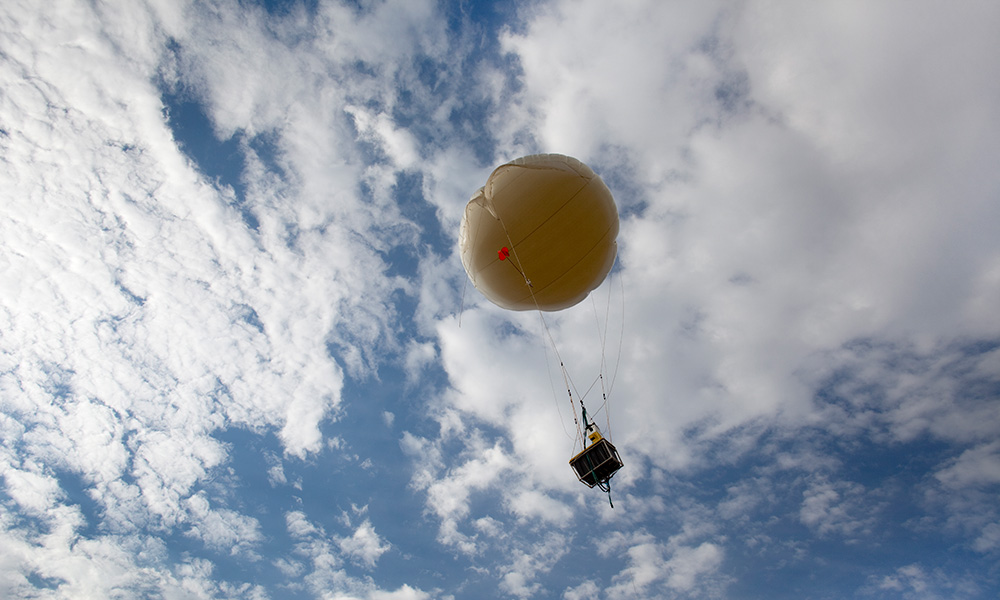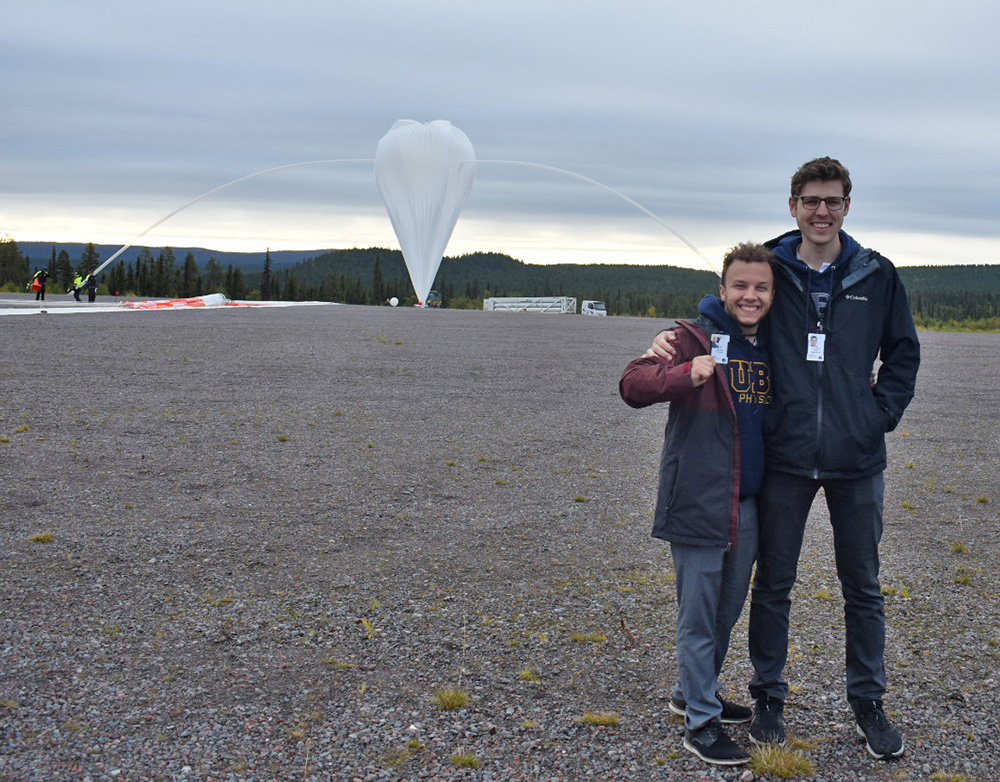
Atmospheric balloons are important tools for gathering information high above the earth in zones where people wouldn’t survive unless they wear pressurized suits.
When Lake Country’s Nolan Koblischke heard the American government was shooting down balloons suspected of spying, he was more than a little curious. The George Elliot Secondary graduate has sent one of those balloons into the atmosphere himself as a student at UBC Okanagan.
Atmospheric balloons are important tools for gathering information high above the earth in zones where people wouldn’t survive unless they wear pressurized suits. Most balloons collect climate data through radios, cameras and satellite navigation equipment—and are incapable of spying.
Koblischke, a fourth-year physics student, and Leonardo Caffarello are part of a UBCO physics and engineering team that launched a balloon to the stratosphere from a space centre in the Swedish Arctic last fall. The team, sponsored by School of Engineering Professor Jonathan Holzman, launched the balloon for a physics experiment to observe cosmic rays.
Koblischke said many people might be surprised at just how much you can learn from a balloon.
What are scientists learning from these atmospheric balloons?
These atmospheric balloons are a powerful and versatile tool for scientific research and exploration. Our balloon was launched in collaboration with Canadian and European agencies, so we were joined by other university and government agency teams from different countries.
Each team flying on the balloon had a different research objective and experiment. For instance, an Italian team was testing solar panels in the upper atmosphere to be used on satellites, a German space agency team was studying stratospheric chemistry and a Hungarian team was testing radiation sensors. We even saw an experiment to carry a telescope for atmosphere-free observations of space. Besides these applications, most balloons are used for weather purposes.
Is this the first time your project has left the ground?
No, the group was originally formed a few years ago by Caffarello and competed against other university teams in the Canadian Stratospheric Balloon Experiment Design Challenge. The UBCO student-led project was one of two experiments selected to fly onboard a high-altitude research balloon launched by the Canadian Space Agency in August 2019. The balloon was airborne at about 120,000 feet for 10 hours.
The project was working on a cosmic ray detection system and they were looking for different cosmic particles across the lower atmosphere. Caffarello has since graduated but led our team on the latest iteration of this experiment that took place in Sweden last fall.
Can you explain what you learned from the experiment last fall?
Our experiment was an innovative endeavour to detect cosmic rays in the stratosphere that Caffarello and I launched from the Esrange Space Center above the arctic circle in Sweden. We learned how to devise and construct an experiment that can withstand the severe conditions of near vacuum and extreme temperatures. We also gathered valuable data during the flight such as temperatures, pressure and images that proved that certain components of our experiment could work. Lastly, we realized that research requires perseverance and collaboration.
One of the most challenging moments was when we found an issue while preparing for the launch, a sudden failure during a pressure test. We worked until 4 am for three nights in a row, culminating in an all-nighter, to brainstorm solutions and design parts on the spot. Although we did not fully fix the problem, we remained resilient and worked diligently to resolve what we could and we were successfully approved for launch.
Cosmic rays sound dangerous
Cosmic rays can cause cancer by damaging DNA, but the chances are very small so you don’t need to lose sleep over it. Thankfully, our atmosphere blocks most of the highest energy cosmic rays, hence why we needed a balloon to get our experiment above much of the atmosphere, to try to detect more cosmic rays. You might have heard that you receive radiation when flying equivalent to a chest x-ray—cosmic rays are the reasons why.
What’s next for students at UBCO? Any more high-flying projects?
Yes, we have a student team called the UBCO StratoNeers who are currently participating in the Canadian Stratospheric Balloon Experiment Design Challenge. It’s the same competition Caffarello participated in back in 2019
The StratoNeers are testing hardware protective techniques to mitigate the occurrence of bit flips due to cosmic radiation in computer binary code. This experiment would provide new insights into protective techniques to safely store data onboard satellites, rovers and space telescopes.
Do you worry someone will shoot down your balloons?
We weren’t worried about our balloon being shot down. It did drift into Norway but thankfully the Norwegians didn’t mind.

Leonardo Caffarello, left, and Nolan Koblischke pose in front of their atmospheric balloon as it’s prepared for launch.
https://news.google.com/rss/articles/CBMiV2h0dHBzOi8vbmV3cy5vay51YmMuY2EvMjAyMy8wMy8yOS91YmNvLXN0dWRlbnRzLWxvb2stdXAtd2F5LXVwLXRvLWdhdGhlci1yZXNlYXJjaC1kYXRhL9IBAA?oc=5
2023-03-29 13:17:37Z
CBMiV2h0dHBzOi8vbmV3cy5vay51YmMuY2EvMjAyMy8wMy8yOS91YmNvLXN0dWRlbnRzLWxvb2stdXAtd2F5LXVwLXRvLWdhdGhlci1yZXNlYXJjaC1kYXRhL9IBAA
Tidak ada komentar:
Posting Komentar